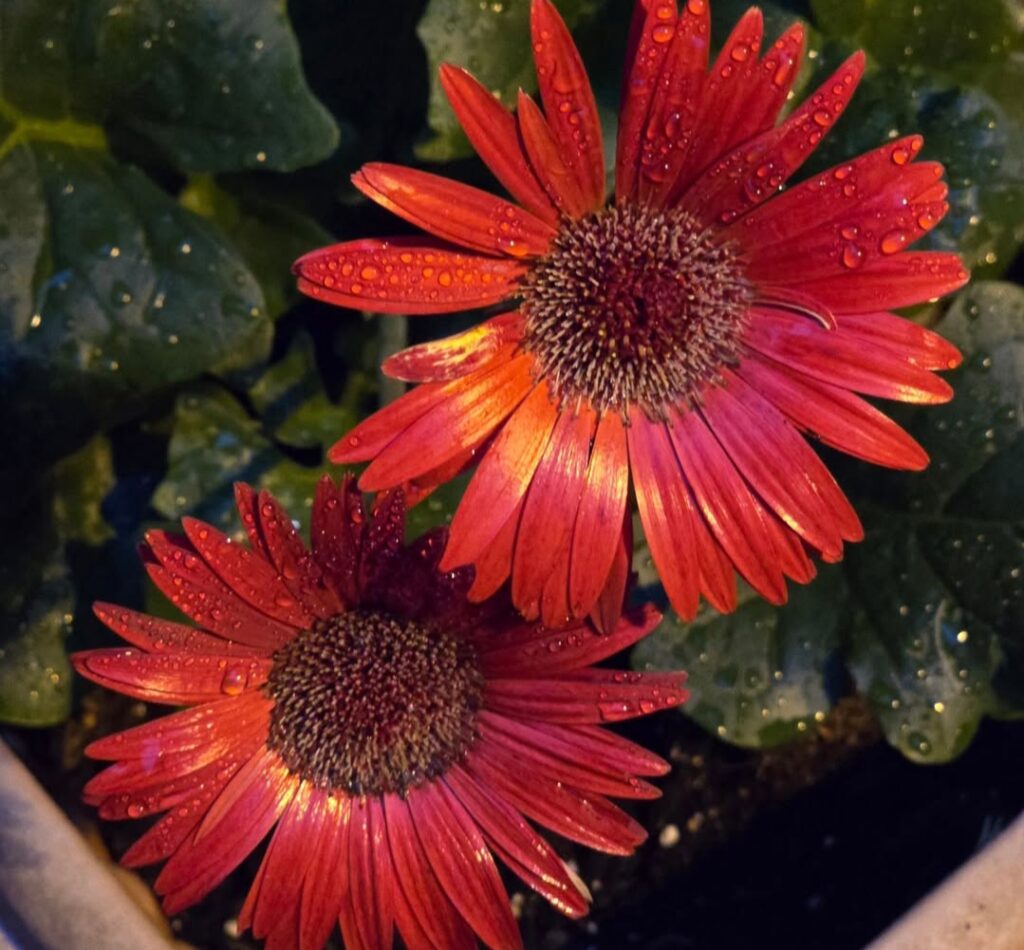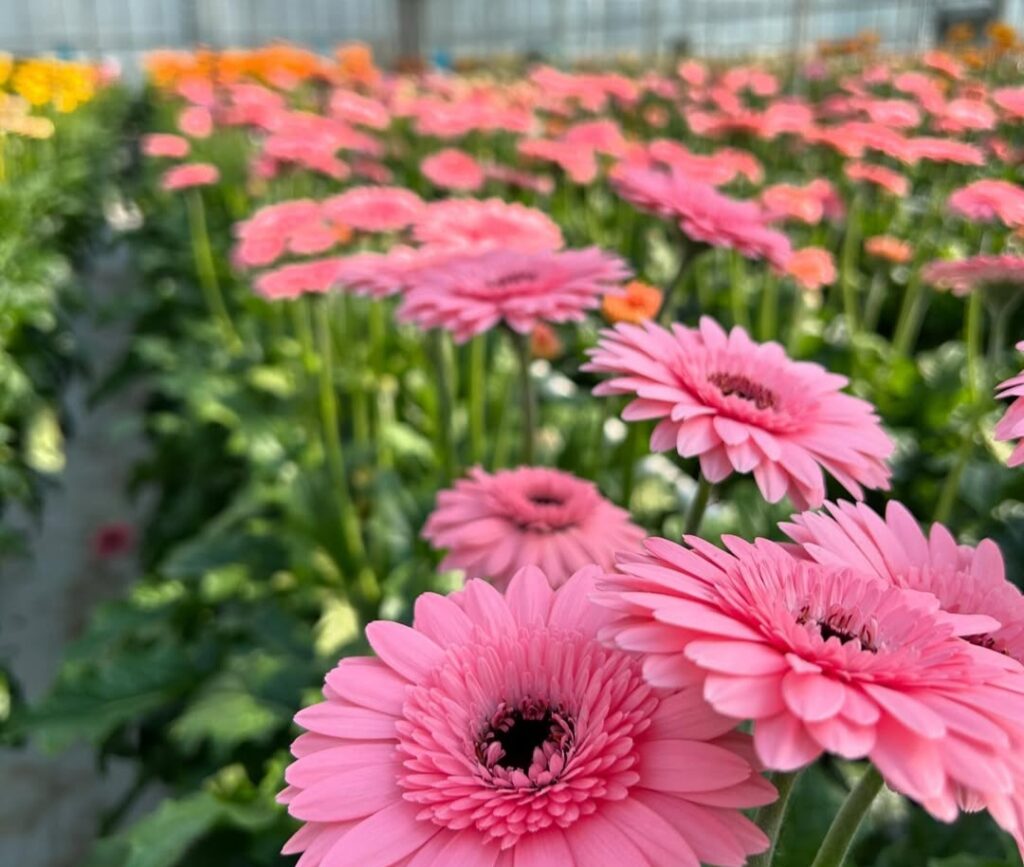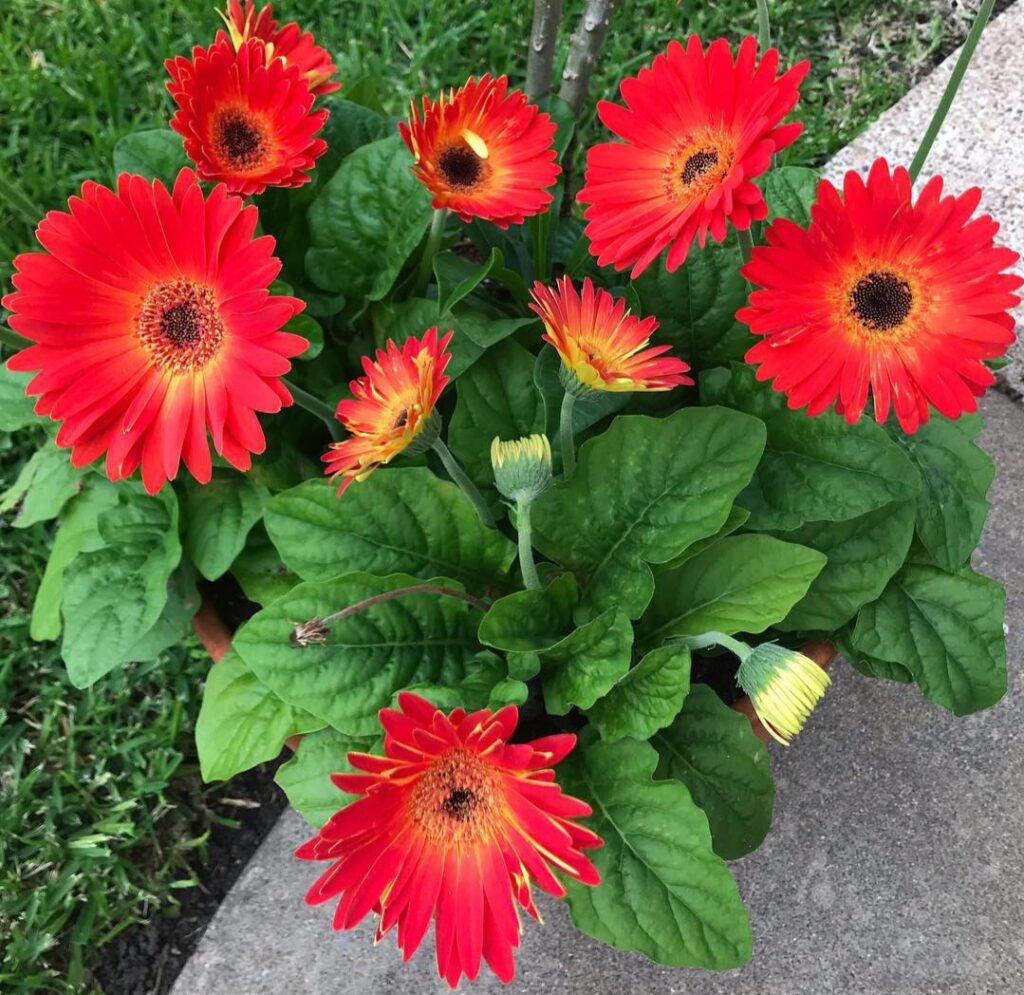
Gerbera Daisy (Gerbera jamesonii) are among the most popular flowers worldwide, admired for their bright, cheerful blooms and versatility. Native to South Africa, these flowers belong to the Asteraceae family, making them relatives of sunflowers and daisies. They come in a range of vibrant colours, including red, orange, yellow, pink, and white, making them an excellent choice for gardens, containers, or as cut flowers in bouquets. With a little care and attention, Gerbera daisies can bloom beautifully throughout the growing season, adding a touch of elegance to your outdoor or indoor spaces.
- 1 Gerbera Daisy
- 2 2. Types of Gerbera Daisies
- 3 3. Gerbera Daisy Growing Conditions
- 4 Light and Temperature
- 5 Soil and pH Preferences
- 6 4. Planting and Care Tips
- 7 Watering Guidelines
- 8 Fertilising Recommendations
- 9 5. Propagation MethodsGrowing From Seeds
- 10 Dividing Plants
- 11 Propagation by Cuttings
- 12 6. Maintenance and Pruning
- 13 Seasonal Care and Overwintering
- 14 7. Common Issues and SolutionsPests
- 15 Diseases
- 16 Nutrient Deficiencies
- 17 8. Maximising Bloom Potential
Gerbera Daisy

Gerbera Daisy are loved for their striking appearance and ease of cultivation. These flowers are highly versatile and can be grown in a variety of settings, including flower beds, borders, containers, and indoor spaces with sufficient light. Gardeners prize Gerbera Daisy for their long-lasting blooms and their ability to thrive in well-drained soil and sunny conditions. Whether you’re a seasoned gardener or a beginner, gerbera Daisy are a rewarding plant that offers endless beauty and charm.
2. Types of Gerbera Daisies
Gerbera Daisy come in several varieties, each with unique characteristics and appeal. Here are the four main types:
Single Flower Gerbera Daisies: These feature a single row of petals encircling a vibrant centre. They are simple yet elegant, perfect for minimalist garden designs.
Semi-Double Flower Gerbera Daisies: With two layers of petals, these daisies have a fuller, more robust appearance that stands out in any setting.
Double Flower Gerbera Daisies: These boast multiple layers of petals, creating a lush and voluminous look. They’re a popular choice for dramatic floral displays.
Spider Flower Gerbera Daisies: This unique variety has thin, elongated petals that give the flowers a playful and unconventional look, making them a conversation starter in any garden.
Each variety adds its own charm to your garden, so consider mixing and matching to create a vibrant and dynamic display.
3. Gerbera Daisy Growing Conditions
Climate and Hardiness Zones
Gerbera daisies thrive in USDA hardiness zones 8–10. In these warmer climates, they are grown as perennials and can bloom year after year with proper care. In cooler zones, they are typically grown as annuals, as they are sensitive to frost. If you live in a colder climate, you can still enjoy gerberas by growing them in containers and bringing them indoors during the winter months.

Light and Temperature
Gerbera Daisy prefer full sun to partial shade. They thrive in temperatures ranging from 60°F to 75°F but can tolerate cooler conditions for short periods. In regions with intense summer heat, providing afternoon shade helps protect the plants from scorching and stress. Avoid planting them near reflective surfaces like walls, as excessive heat can damage the plants.
Soil and pH Preferences
Well-draining soil is essential for Gerbera Daisy. They thrive in soil that is rich in organic matter and slightly acidic, with a pH between 5.5 and 6.5. Soil that is too alkaline can lead to nutrient deficiencies, while overly acidic soil can cause root damage. Regularly test your soil to ensure it meets these conditions, and amend it with organic matter if necessary.
4. Planting and Care Tips
Choosing a Planting Location
Selecting the right location is crucial for the success of your gerbera Daisy. Choose a spot with good air circulation and protection from intense heat. Ensure the area receives adequate sunlight for at least six hours a day, but avoid spots with harsh, direct afternoon sun in hotter climates.
Watering Guidelines
Gerbera Daisy require consistent watering, but it’s important not to overwater them. Newly planted daisies should be watered regularly until they are established. Mature plants need about 1 inch of water per week. Always allow the top inch of soil to dry out between waterings to prevent root rot.
Fertilising Recommendations
To encourage lush growth and vibrant blooms, feed your Gerbera Daisy every two weeks during the growing season with a water-soluble fertiliser that is high in phosphorus. Avoid fertilisers high in nitrogen, as they promote foliage growth at the expense of flowers. Compost is another excellent option, providing slow-release nutrients throughout the season.
5. Propagation Methods
Growing From Seeds
Growing gerbera daisy from seeds is a rewarding process, but it requires patience. Start seeds indoors 12–18 weeks before the last frost date in your area. Sow the seeds on the surface of a well-draining potting mix, as they need light to germinate. Cover the pots with plastic wrap to retain moisture, and place them in a warm, sunny location. Seeds typically germinate in 2–4 weeks.
Dividing Plants
Dividing mature Gerbera daisy is an effective way to rejuvenate older plants and propagate new ones. In early spring, dig up the plant and carefully separate the root ball into sections. Each division should have healthy roots and leaves. Replant the divisions in fresh soil, water thoroughly, and ensure they receive adequate sunlight as they establish themselves.
Propagation by Cuttings
Gerbera daisies can also be propagated through cuttings. Take cuttings from new growth in summer, dip the ends in rooting hormone (optional), and plant them in well-draining soil. Keep the cuttings in a warm, shaded area until roots develop.
6. Maintenance and Pruning
Deadheading for Continuous Blooms
Deadheading is essential to keep your Gerbera Daisy blooming throughout the season. Regularly remove spent flowers by cutting the stems back to the base. This prevents the plant from expending energy on seed production and encourages new blooms.
Seasonal Care and Overwintering
In zones 8–10, Gerbera Daisy can be overwintered outdoors by cutting them back to 1 inch above the soil and covering them with 3–4 inches of mulch for insulation. In cooler zones, pot your gerberas and bring them indoors to a brightly lit room with temperatures between 45°F and 60°F during the winter months.
7. Common Issues and Solutions
Pests
Gerbera Daisy are susceptible to pests like aphids, spider mites, and whiteflies. Examine your plants frequently, and use neem oil or insecticidal soap to cure infestations. Eliminating harmed leaves might also aid in pest management.
Diseases
Fungal diseases such as powdery mildew and crown rot can affect gerbera Daisy especially in humid conditions. To prevent these issues, ensure good air circulation around your plants and water at the base rather than overhead.
Nutrient Deficiencies
Yellowing leaves and stunted growth often indicate nutrient deficiencies, particularly iron. Test your soil’s pH and amend it with iron supplements or compost as needed.
8. Maximising Bloom Potential
To ensure your Gerbera Daisy produce vibrant blooms all season, thin out excess foliage to allow sunlight to reach the plant’s centre. Fertilise regularly with a bloom booster, and consider moving potted plants indoors during extreme heat to prolong flowering.
By following these guidelines, you can enjoy the stunning beauty of Gerbera Daisy in your garden or home. With their vibrant colours and manageable care requirements, these flowers are sure to bring joy and elegance to any setting. Whether you’re a gardening novice or a seasoned enthusiast, gerbera daisies are a rewarding choice that will brighten your space year-round.







